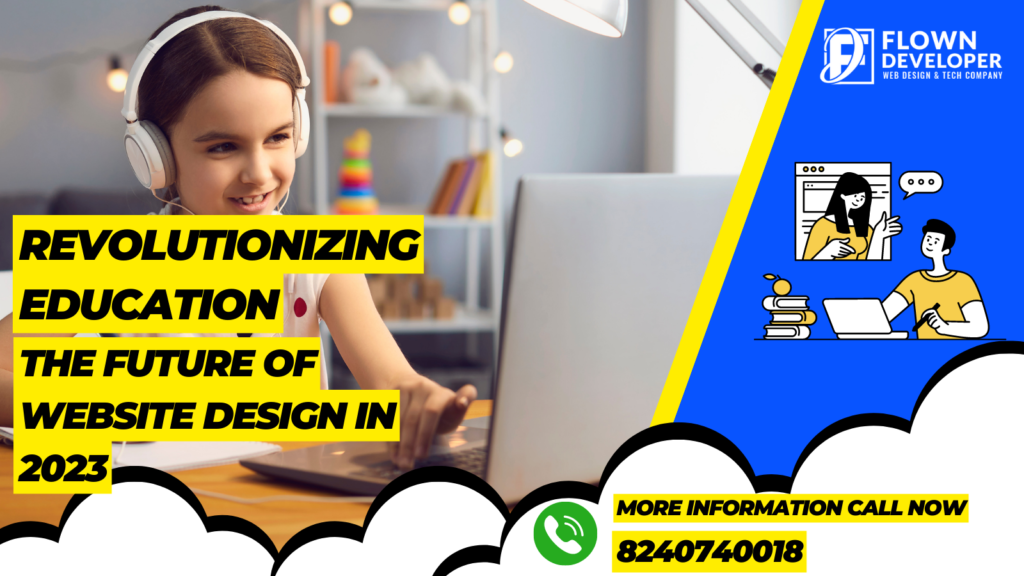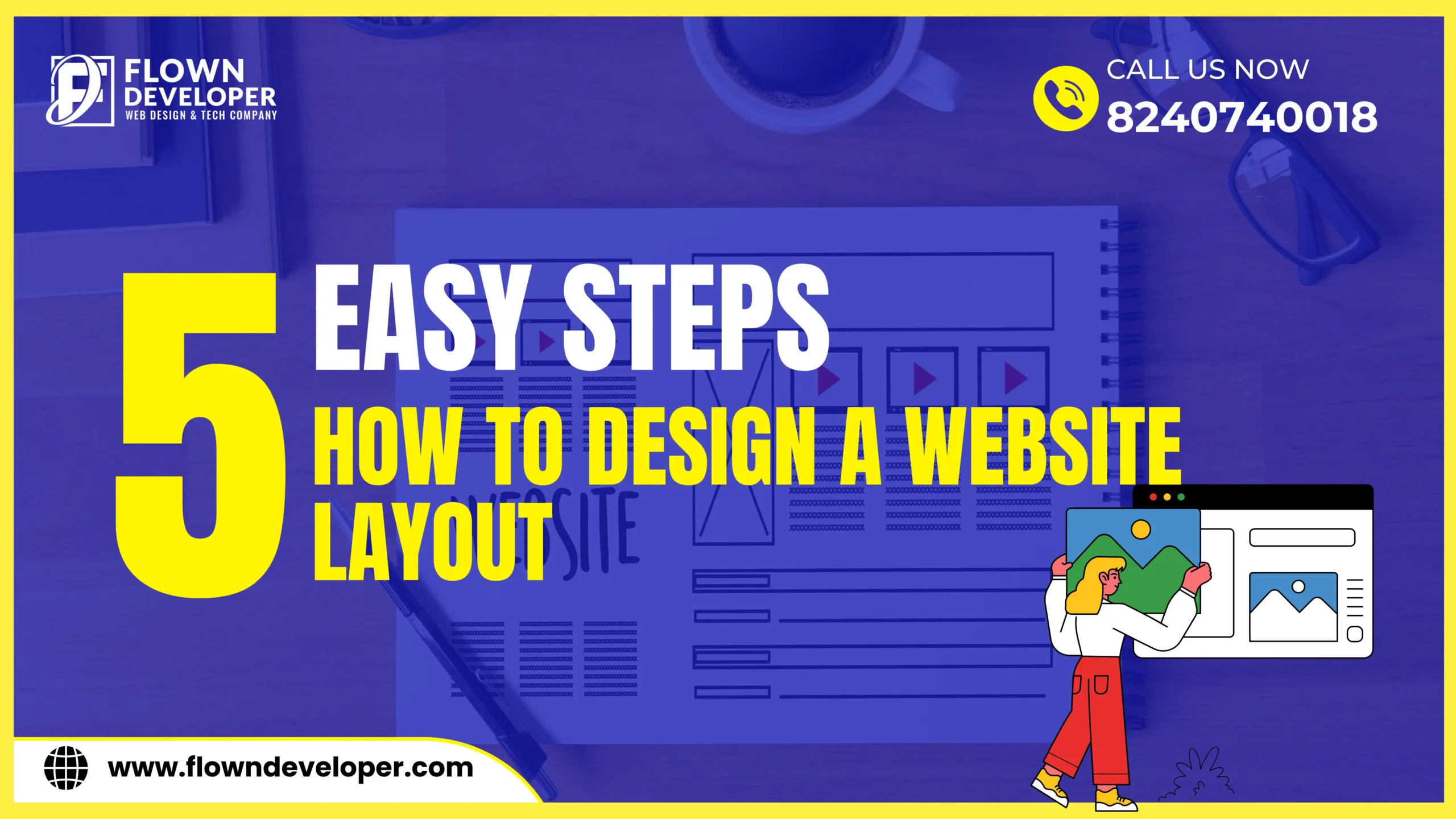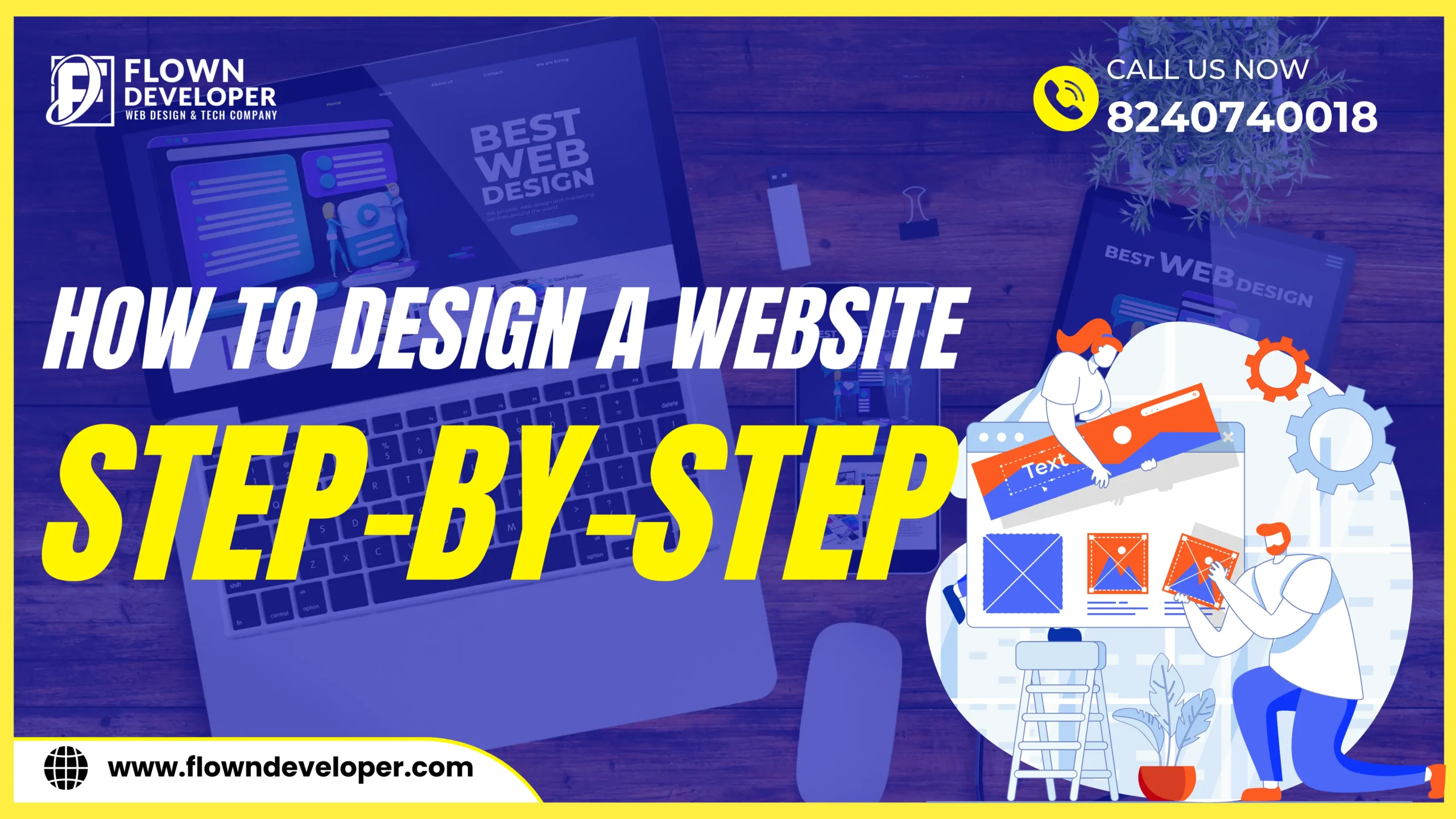Revolutionizing Education: The Future of Website Design in 2023!
In today’s digital age, educational institutions need a well-designed website.
A thoughtfully crafted web design can significantly impact the success of an educational website, ensuring a positive user experience and fostering engagement.
Introduction
Whether it’s a school, college, university, or online learning platform, the design plays a pivotal role in attracting and retaining visitors.
Here are three reasons why a well-designed website is crucial for educational institutions:
Professionalism and Credibility
A thoughtfully designed website enhances the user experience by making it easy for visitors to find the information they need.
Intuitive navigation, clear content organization, and responsive design ensure that users can access the site seamlessly from any device.
Engaging design elements, such as interactive features and multimedia content, can also increase user engagement, encouraging them to spend more time exploring the site and learning about the institution.
User Experience and Engagement
A thoughtfully designed website enhances the user experience by making it easy for visitors to find the information they need. Intuitive navigation, clear content organization, and responsive design ensure that users can access the site seamlessly from any device. Engaging design elements, such as interactive features and multimedia content, can also increase user engagement, encouraging them to spend more time exploring the site and learning about the institution.
Effective Communication and Marketing
Educational websites are powerful marketing tools to attract potential students, parents, and other stakeholders.
A well-designed website communicates the institution’s unique value proposition, showcases its strengths and achievements, and highlights academic programs and extracurricular activities.
Compelling visuals, testimonials, and success stories create an emotional connection and motivate visitors to take the desired action, such as filling out an inquiry form or applying for admission.
As a result, well-designed websites are essential for educational institutions today.
It helps establish professionalism, enhances user experience and engagement, and effectively communicates the institution’s value and offerings.
By investing in a thoughtful and visually appealing web design, educational institutions can stand out from the competition and attract more visitors, leading to increased enrollment and success.
Importance of Web Design for Educational Websites
A well-designed educational website offers numerous benefits.
It establishes a professional and credible online presence and enhances accessibility and usability for all users.
A user-friendly interface, intuitive navigation, and visually appealing elements create an inviting environment for students, educators, and parents alike.
One of the primary benefits of a well-designed educational website is that it establishes a professional and credible online presence for the organization or institution.
Visitors can feel confident about the quality of education offered when a website looks polished and visually appealing.
Furthermore, a user-friendly interface is crucial for enhancing accessibility and usability.
Students, educators, and parents should be able to easily navigate the website and find the information or resources they are looking for.
This can include clear and intuitive menus, search functions, and well-organized content.
A well-designed educational website also includes visually appealing elements.
Engaging graphics, images, and videos can capture users’ attention and make the learning experience more enjoyable.
These elements can also be used to illustrate complex concepts and improve comprehension.
Additionally, a website optimized for mobile devices ensures users can access educational content on different devices.
With the proliferation of smartphones and tablets, educational websites must be responsive and adaptable to various screen sizes.
Moreover, a well-designed educational website can integrate features such as interactive quizzes, discussion forums, or online assessments.
These interactive elements can enhance learning experiences and promote student engagement.
Lastly, a professionally designed educational website can foster a sense of community by providing an online platform for collaboration and communication.
Educators can share lesson plans and resources, students can submit assignments or participate in online discussions, and parents can stay informed about their child’s progress.
Overall, a well-designed educational website has numerous benefits, including establishing credibility, enhancing accessibility and usability, providing visually appealing content, fostering engagement and interaction, and creating a sense of community.
These factors contribute to a positive and practical learning experience for students, educators, and parents.
Understanding the Target Audience
Before diving into the design process, it’s essential to understand the unique needs of different user groups.
Educators may seek quick access to curriculum resources, while students may look for course materials and assignment submissions.
Parents may require information on school events and academic progress.
Recognizing and catering to these diverse needs enables web designers to design websites for specific audience segments.
Creating User Personas to Guide the Design Process
Developing user personas based on demographic data, preferences, and pain points allows designers to personalize the website experience. Understanding user motivations and goals enables the creation of a user-centric design that resonates with the target audience.
Key Features and Functionality:
Easy Navigation and Intuitive User Interface: Simplicity in navigation is key for an educational website. A clear and intuitive user interface helps visitors find information effortlessly and enhances overall user satisfaction. Well-structured menus, breadcrumbs, and site maps contribute to a smooth browsing experience.
Mobile Responsiveness and Compatibility: With the prevalence of mobile devices, ensuring that the educational website is responsive and compatible with various screen sizes is essential. A mobile-friendly design enables users to access the website on the go, ensuring accessibility from any device.
Interactive Elements to Engage Users: Engaging users through interactive features like quizzes, polls, and discussion forums fosters active participation and community building. Gamification elements can make learning more enjoyable and rewarding, encouraging students to return to the platform.
Accessibility Features for Different Learning Needs: Inclusivity is crucial in educational web design. By adding accessibility features, such as alt text for images, subtitles for videos, and screen reader compatibility, users with disabilities will have easier access to content.
Visual Design Considerations
Implementing a Clean and Organized Layout: A clutter-free layout with a logical structure enhances content readability and helps users focus on essential information. Organized sections and a clear visual hierarchy make the website appealing and easy to navigate.
Incorporating a Consistent Color Scheme and Branding: Consistency in color scheme and branding elements reinforces the institution’s identity and fosters a sense of familiarity. Using colors that evoke a positive emotional response can create a more engaging user experience.
Using High-Quality Images and Multimedia Content: High-quality images and multimedia content enrich the website’s visual appeal and make the learning experience more engaging. Relevant images, videos, and infographics can enhance the comprehension of complex concepts.
Typography Considerations for Readability: Choosing appropriate fonts and font sizes is crucial for content legibility. Readable fonts improve text comprehension, ensuring that users can absorb information easily.
Content Development and Organization
Creating Compelling and Relevant Content: Content is the heart of an educational website. Developing informative and engaging content that aligns with the institution’s objectives is essential for attracting and retaining visitors.
Structuring Information for Easy Comprehension: Organizing content into well-structured sections and using headings, subheadings, and bullet points enhance content scan ability. The clear content organization helps users find what they need quickly.
Implementing a Search Function for Easy Content Discovery: Incorporating a search function enables users to find specific information efficiently. Websites with large content libraries will especially benefit from this feature.
Regularly Updating and Maintaining the Website: Keeping the website updated with the latest information, events, and announcements is crucial. Regular maintenance ensures that the website remains relevant and provides accurate information to users.
Integration of Educational Tools and Resources
Incorporating Learning Management Systems (LMS): Integrating a Learning Management System allows educators to manage courses, assignments, and assessments effectively. Students can access course materials and track their progress conveniently.
Adding Interactive Quizzes and Assessments: Interactive quizzes and assessments engage students in active learning. Providing instant feedback on quiz results can help students identify areas for improvement.
Providing Access to E-books and Educational Materials: Offering access to e-books, research papers, and other educational resources enriches the learning experience. Easy access to these materials enhances the value of the website for students and educators.
Integrating Social Learning Platforms: Integrating social learning platforms enables students and educators to collaborate, share ideas, and engage in discussions. Social features foster a sense of community within the educational website.
Optimizing for Search Engines
Implementing Relevant Keywords and Meta Tags: Incorporating relevant keywords and meta tags enhances the website’s search engine visibility. Proper use of SEO techniques helps the website rank higher in search results.
Optimizing Page Load Speed and Performance: Fast-loading pages improve user experience and reduce bounce rates. Optimizing images, caching, and server response time can enhance page load speed.
Creating SEO-Friendly URLs and Site Structure: SEO-friendly URLs and a well-organized site structure help search engines understand the website’s content hierarchy, improving its ranking potential.
Usability Testing and User Feedback
Conducting Usability Testing to Identify Pain Points: Usability testing involves real users interacting with the website to identify usability issues and pain points. This valuable feedback can drive design improvements.
Gathering User Feedback for Continuous Improvement: Encouraging user feedback and reviews allows educational institutions to understand user needs better. Addressing user suggestions helps in refining the website over time.
Based on User Insights, Iterate and Refine the Design: Iterative design based on user insights leads to continuous improvement, ensuring the website evolves to meet the changing needs of its users.
A well-designed educational website creates a positive user experience and fosters engagement among students, educators, and parents.
Investing in an effective web design that aligns with the institution’s goals and caters to the target audience’s needs can lead to a successful educational website that supports learning and growth.









